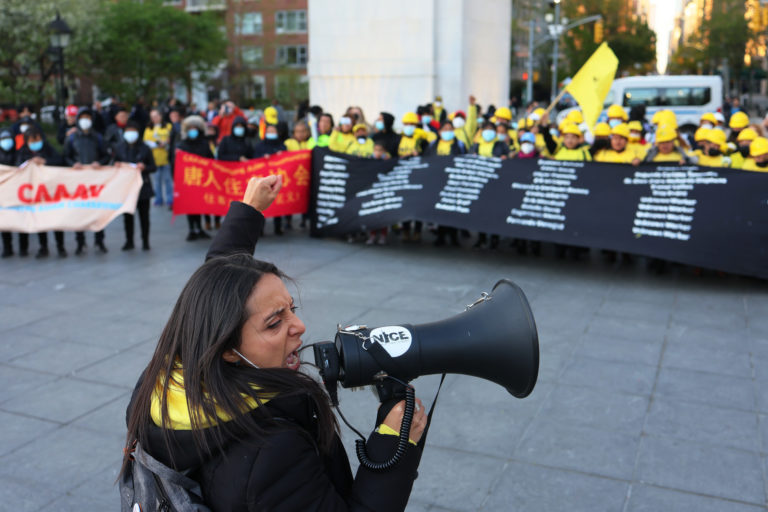Jack Goldsmith is the Learned Hand Professor of Law at Harvard Law School, where he teaches and writes about national security law, international law, internet law, and, recently, labor history. Before coming to Harvard, Professor Goldsmith served as Assistant Attorney General, Office of Legal Counsel from 2003-2004, and Special Counsel to the Department of Defense from 2002-2003.
As we noted a few days ago, SEIU is contemplating several ballot initiatives in California ostensibly related to controlling hospital health care costs which it says it will drop if California hospitals agree to some form of organizing/neutrality agreement with the union. (WSJ story here, non-pay-walled story here.)
Megan McCardle doesn’t like SEIU’s move:
The Service Employees International Union is sponsoring ballot initiatives in California and Oregon that would cap executive pay at hospitals and limit how much customers can be charged. But what does this have to do with the workers? you will ask. The answer is nothing, directly. Instead, the ballot initiatives are bargaining chips. If the hospitals will “work with” the union, the SEIU will back off the ballot initiatives, which threaten hospital profits.
There are all sorts of reasons not to like unions, or any other group, that use the initiative process this way. There’s no theoretical limit to the terrible initiatives one could come up with, and then drop, in exchange for firms “working with us.” They don’t even have to be initiatives with a high chance of passage, just things that you can force the other side to spend money opposing — at which point, it might be less bother just to give you what you want.
But, of course, this strategy is not free for the SEIU, either; you can spend a lot of money on fake initiatives, have your bluff called, and end up with no money and no more members. It’s probably a measure of how desperate their prospects are that they have chosen it.
I wouldn’t call SEIU’s tactic a measure of desperation. I would call it a confident and aggressive extension of often-successful (and longstanding) corporate campaign tactics to ballot initiatives. I generally see corporate campaigns as perfectly legitimate exercises of union and worker power in labor markets (as long as they are otherwise lawful). (Compare Robert Verbruggen’s conservative defense of alt-labor.) But the extension of the corporate campaign idea to the manipulation of ballot initiatives gives me pause, for it seems like a misuse or abuse of the democratic process that, as McCardle says, one can imagine getting out of control in many directions.
But in truth whether the SEIU tactic is truly a perversion of the democratic process is in the first instance a question of California law. Unless and until California outlaws the practice, it is functionally just another example of unions exercising market power in novel though lawful ways to help their members. Nonetheless, the technique will seem beyond the pale to many, and could backfire – either by inviting political backlash, or by inviting judicial rebuke. One form of judicial rebuke could come in Mulhall. What SEIU is seeking in its ballot initiative gambit are neutrality agreements. One conservative knock on neutrality agreements is that unions use close-to-the-legal-line hardball tactics to get such agreements, which themselves bring card-check votes and employer neutrality provisions that make it easier than under Wagner Act procedures for unions to impose membership (and fees) on non-consenting minority workers. One can easily imagine some of the deliberating Justices in Mulhall being influenced – and not in a pro-union way – by the SEIU example. (And note that it was SEIU’s super-aggressive member-fee extraction techniques – also in the California ballot initiative context – that led to the union-damaging Supreme Court decision in Knox.)






Daily News & Commentary
Start your day with our roundup of the latest labor developments. See all
December 22
Worker-friendly legislation enacted in New York; UW Professor wins free speech case; Trucking company ordered to pay $23 million to Teamsters.
December 21
Argentine unions march against labor law reform; WNBA players vote to authorize a strike; and the NLRB prepares to clear its backlog.
December 19
Labor law professors file an amici curiae and the NLRB regains quorum.
December 18
New Jersey adopts disparate impact rules; Teamsters oppose railroad merger; court pauses more shutdown layoffs.
December 17
The TSA suspends a labor union representing 47,000 officers for a second time; the Trump administration seeks to recruit over 1,000 artificial intelligence experts to the federal workforce; and the New York Times reports on the tumultuous changes that U.S. labor relations has seen over the past year.
December 16
Second Circuit affirms dismissal of former collegiate athletes’ antitrust suit; UPS will invest $120 million in truck-unloading robots; Sharon Block argues there are reasons for optimism about labor’s future.